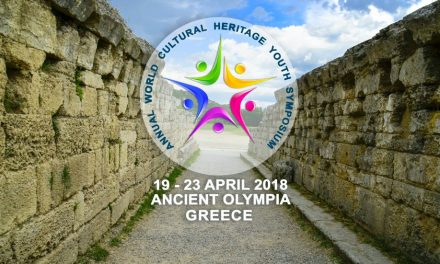The cultural heritage of Greece is protected by strong national and international laws, but this diverse heritage remains at risk of being stolen, looted, or illegally traded. Indeed, the Greek cultural heritage has suffered great losses over the years, compared to its special significance. Greek antiquities are scattered in the world’s largest museums and private collections. Numerous cultural goods have been illegally trafficked at various times, under known or unknown circumstances. The data collected by the respective Directorate for Documentation and Protection of Cultural Goods of the Ministry of Culture prove that the antiquities trade continues.
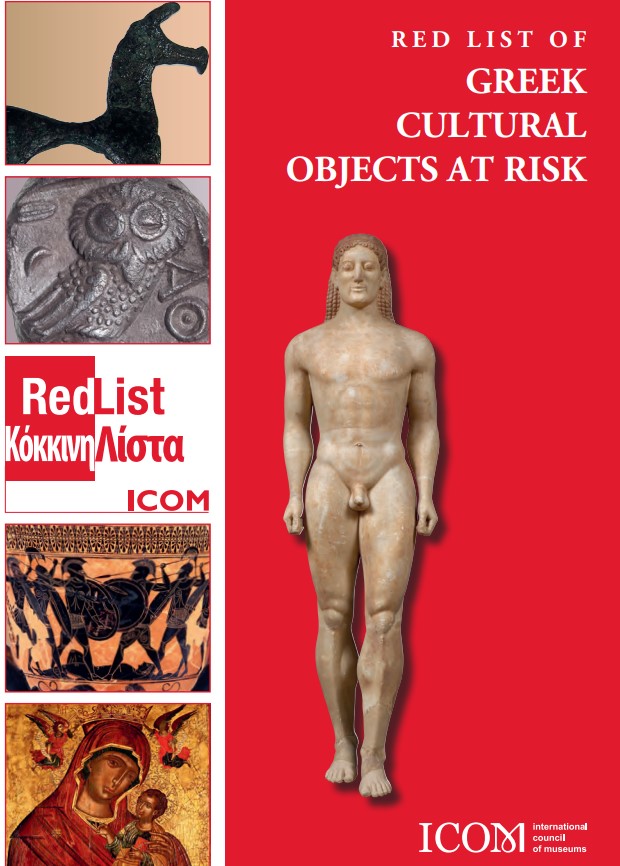
Within this framework, the International Council of Museums (ICOM) in cooperation with ICOM Greece and a dedicated team of specialists in Greece, with the support of the Hellenic Ministry of Culture, has published the Red List of Greek Cultural Objects at Risk, whose purpose is to contribute to the protection of cultural heritage by identifying the type of objects that are most at risk. Antiquities seized in recent years within Greece or repatriated from abroad through claims, confiscations, or voluntary surrenders serve as representative examples of the categories included in the List and highlight the ongoing vulnerability of Greek cultural heritage. In the words of Medea S. Ekner, ICOM Director General, “Due to its extraordinary history, heritage, and culture of this country, Greece is a primary target for illicit trade. Greek cultural heritage remains particularly vulnerable to clandestine excavations in particular. I am deeply thankful to each of the experts and professionals from Greek museums and institutions whose contributions have been pivotal in creating this new Red List!”
Experts of various specialties from Museums, Central Directorates, and Special Regional Services of the Ministry of Culture jointly formulated and defined, based on strict criteria, the categories of cultural goods at risk due to the phenomenon of illegal trafficking of cultural goods. These criteria can be summarized as follows: a) the demand of certain categories of cultural goods in the art trade (in auction houses, exhibitions by antiquarians, galleries, private collections), b) the vulnerability of these objects to traffic, as recorded through thefts in Greece and seizures at the national and international level, and c) their protection by national legislation and international conventions.
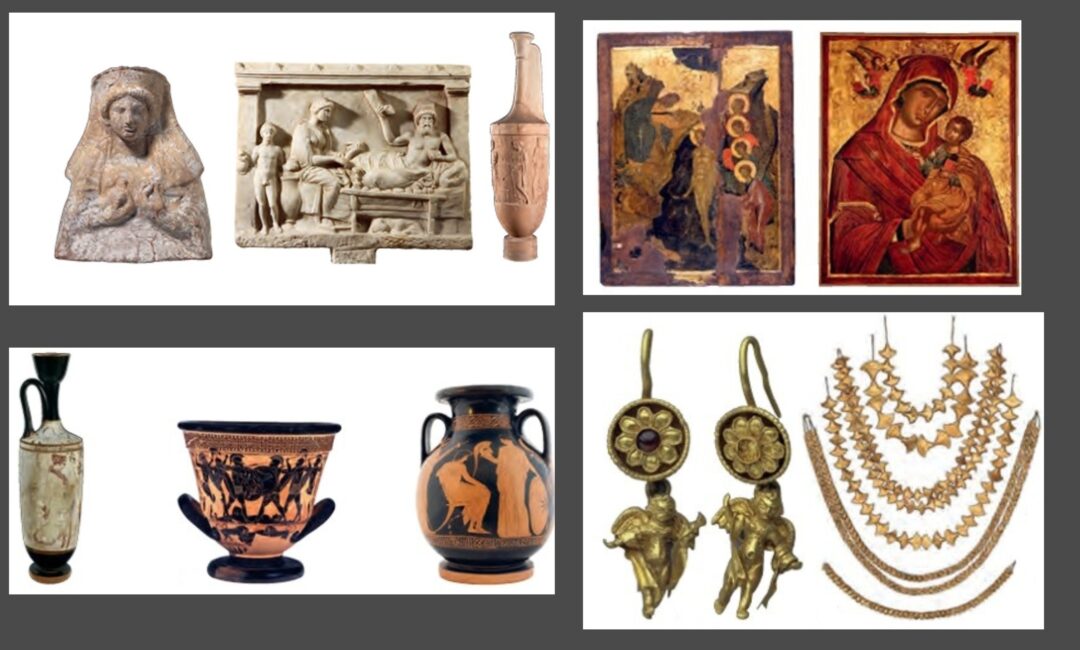
Published in both Greek and English, the Red List includes nine (9) categories of cultural objects at risk, that is sculptures, vessels-sarcophagi, architectural elements, armour, numismatics-sigillography, jewellery-accessories, ecclesiastical-liturgical objects, books, documents and prints, and paintings. It also comprises a total of 52 photographs of objects from the collections of the Hellenic National Archaeological Museum, the Archaeological Museum of Thessaloniki, the Archaeological Museum of Heraklion, the Byzantine and Christian Museum (Athens), the Museum of Byzantine Culture (Thessaloniki), the Numismatic Museum, the Museum of Modern Greek Culture, the Ephorate of Underwater Antiquities, and the Diachronic Museum of Larissa.
The Red List of Cultural Objects at Risk was presented on March 11, 2025 at the Acropolis Museum. Greek Minister of Culture, Lina Mendoni, stated that “the Red Lists are mainly aimed at sensitise the authorities, such as police or customs officials, as well as those involved in the purchase of antiquities and works of art. The Red Lists draw attention to specific categories of cultural goods that are at risk of being trafficked. The importance of the list is recognised globally and is widely used to combat illicit trafficking. Here today, at the Acropolis Museum, the number and prestige of the participants in today’s event, which is organized by the Greek Section of ICOM in cooperation with the Ministry of Culture through the Directorate for the Protection and Documentation of Cultural Property, highlights the recognition of our country’s work in the field of combating illicit trafficking. At the same time, today’s event comes to demonstrate that the most appropriate measure to curb illicit trafficking is international cooperation and international understanding.”
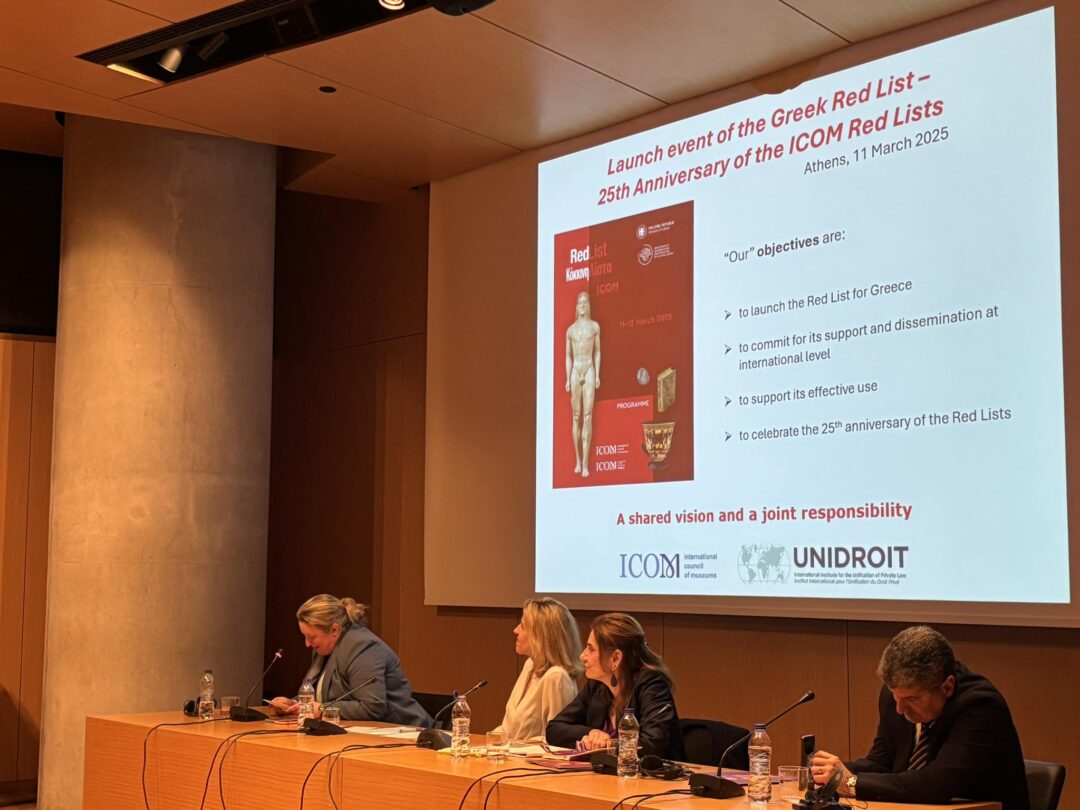
The Red List is accessible online and is distributed to law enforcement agencies (customs and police), museums, and the art market worldwide. Museums, auction houses, art dealers and collectors are urged not to acquire objects like those presented in this Red List, without having carefully and thoroughly researched their origin and all relevant legal documentation. Any cultural artefact that could have originated from Greece should be subject to detailed scrutiny and precautionary measures before a transaction is concluded.
——————–
The International Council of Museums (ICOM) was established in 1946 to represent museums and museum professionals worldwide. ICOM is committed to the promotion and protection of natural and cultural heritage, present and future, tangible and intangible. With a unique network of over 57,000 members in 129 countries and territories (2023), ICOM is active in a wide range of museum and heritage related disciplines. Since 2000, ICOM has published Red Lists that detail categories of endangered cultural objects from all over the world. These Red Lists have become important instruments in the fight against the illicit traffic of cultural heritage. Red Lists are practical tools that help art and heritage professionals, as well as law enforcement officials, to identify cultural objects that are protected by national and international legislation. The Lists are published in several languages and have made a significant contribution to the identification, recovery, and return of thousands of cultural goods to their countries of origin with a major global impact.
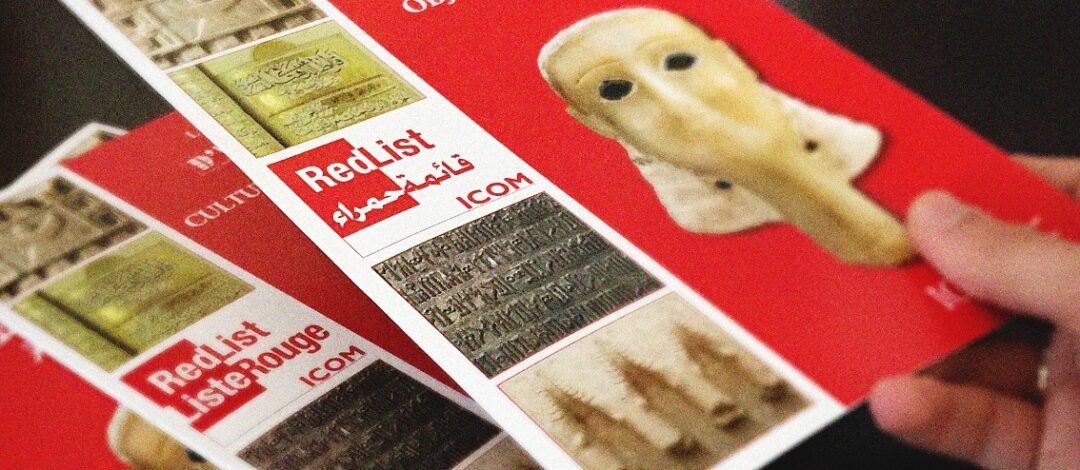
The Hellenic National Committee of ICOM was founded in 1983 having as its primary mission to promote various fields of museology by organizing seminars, scientific meetings, international conferences and other events, as well as publishing scientific manuals in Greek. It collaborates with the Ministry of Culture, Universities, research institutions, scientific organizations in Greece and abroad and various public and private organizations. Within its framework, working groups with the same scope as International Committees, operate on specific topics and organize workshops, lectures, and other meetings. Additionally, it publishes an annual Newsletter featuring articles and reports on museums, exhibitions, educational and cultural activities, International Museum Day celebrations, new publications, and current issues related to the protection of cultural heritage.
A.R.
*Intro Photo ©Vangelis Patsialos

